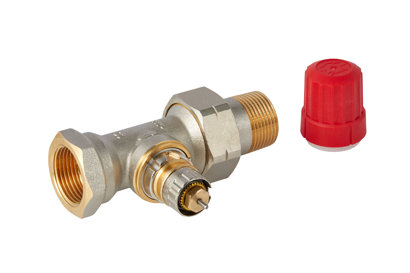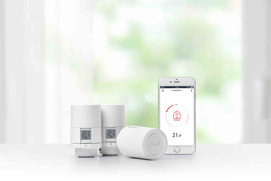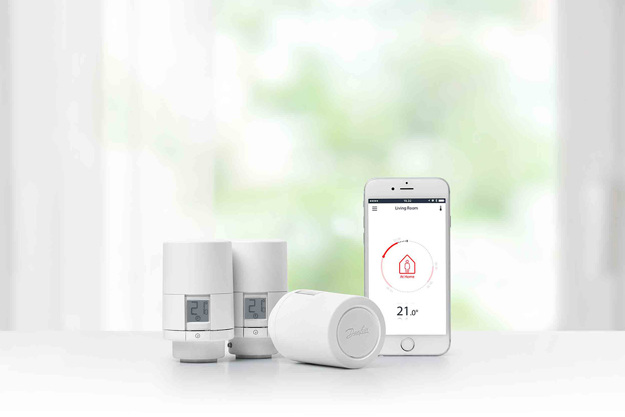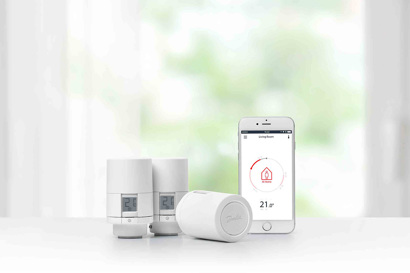Danfoss radiator thermostats help you optimise the heating of your home—and save money without compromising on comfort.
You can easily set and maintain your preferred temperature, even down to each individual room. Maybe you like your living room nice and warm but want to keep a rarely used spare room at minimum temperature?
Plus, heating your home more efficiently allows you to lower your heating bill. In fact, there’s a good chance that you can reduce your heat consumption significantly simply by upgrading your thermostats.
Danfoss invented the radiator thermostat more than 80 years ago and today, more than 40 million homes are heated with this technology.
Our extensive range of radiator thermostats are robustly built and designed to meet the demands of domestic life while increasing comfort and saving energy.

Features and benefits
Danfoss radiator thermostats maintain your desired room temperatures for optimal comfort in your home — room by room.
Fast reaction time compared to a manual thermostat helps lower your energy consumption — and reduce your heating bill.
Fast and easy installation
Service life of 20+ years thanks to its gas-charged, precision-manufactured sensors. Unlike other fillings, gas maintains a high regulating capacity and reactivity.
Mechanical, smart or design thermostat?
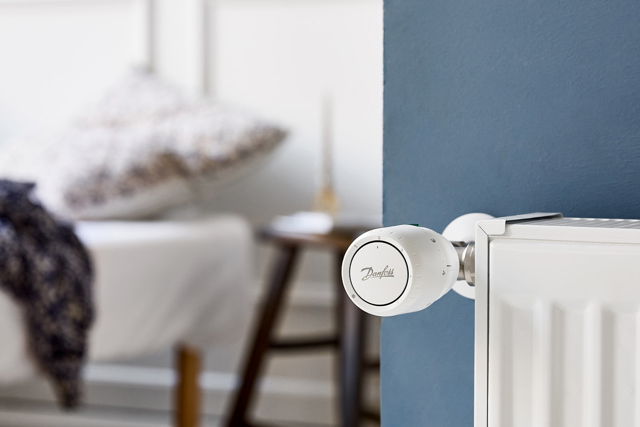
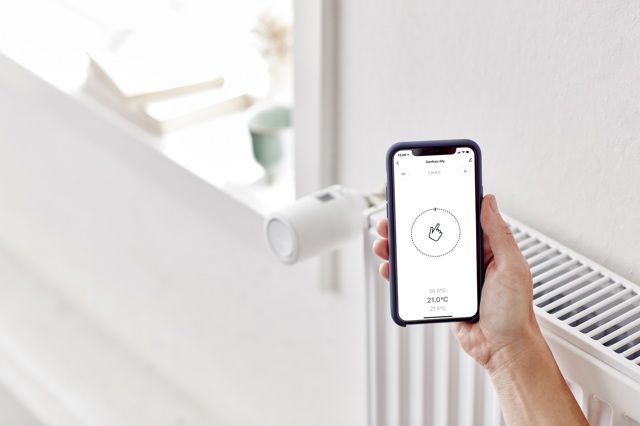
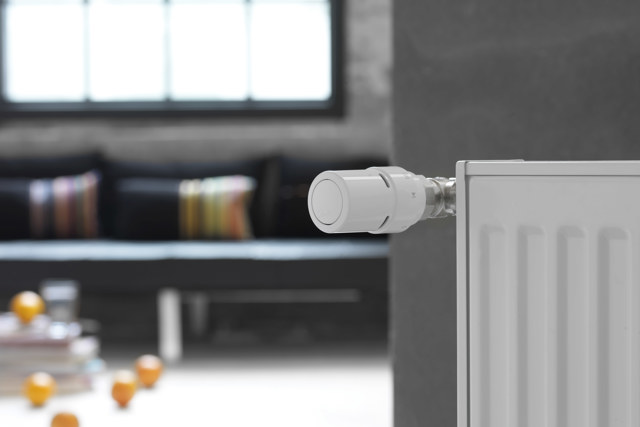

Check your savings potential
Upgrading your old radiator thermostats is a quick and easy way to reduce your energy consumption — and lower your heating bill. Want to know how much you can save? Check out our infographic to find out.
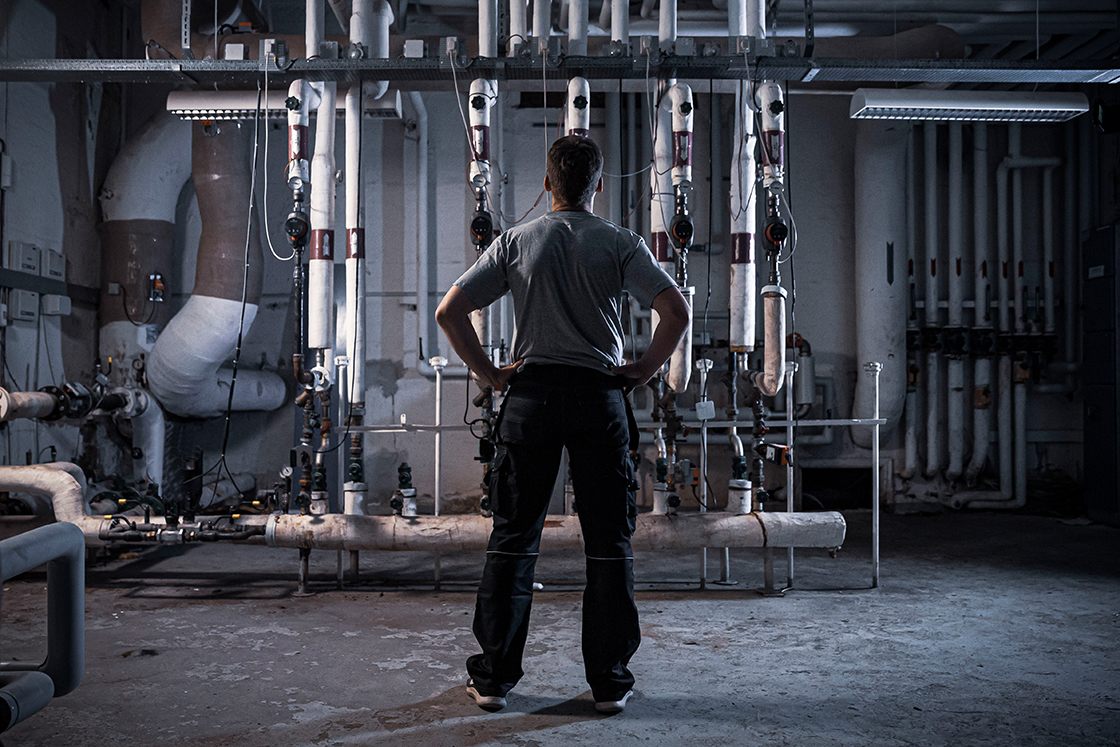
Installer Life made easier
We have tried to make #installerlife a little easier by creating a platform with everything on the products you use as a Heating Professional. Find simplified product info, installation support, videos, hot topics, free training and more customized to your #installerlife.
Check it out!
Find the right product
Check out our easy and simple product overview and find exactly what you need. We have a radiator thermostat (TRV) for any challenge.
How it works
These videos cover essential information on radiator thermostat settings, symbols, and how thermostatic radiator valves can increase condensing boiler efficiency. Radiator thermostats are a fast and cheap way to optimize the heating system.
Danfoss AveoTM
Danfoss RA2000 series
How Thermostatic Radiator Valves increase condensing boiler efficiency
FAQ
Documents
| Type | Name | Language | Valid for | Updated | Download | File type |
|---|---|---|---|---|---|---|
| Data sheet | Adapters for thermostatic sensors | Latvian | Multiple | 31 Jan, 2024 | 418.4 KB | |
| Data sheet | Adapters for thermostatic sensors | English | Multiple | 31 Jan, 2024 | 394.6 KB | |
| Data sheet | Adapters for thermostatic sensors | Lithuanian | Multiple | 31 Jan, 2024 | 416.6 KB | |
| Data sheet | Adapters for thermostatic sensors | German | Multiple | 22 Jan, 2024 | 420.5 KB | |
| Data sheet | Éléments thermostatiques RAE | French | Multiple | 09 Jan, 2013 | 8.0 MB | |
| Data sheet | FJVR | Ukrainian | Ukraine | 24 Dec, 2021 | 204.2 KB | |
| Data sheet | RAE thermostatic sensors | Czech | Multiple | 08 Sept, 2014 | 1.3 MB | |
| Data sheet | RAE thermostatic sensors | Spanish, Castilian | Multiple | 08 Sept, 2014 | 1.2 MB | |
| Data sheet | RAE thermostatic sensors | Latvian | Latvia | 04 Oct, 2021 | 857.1 KB | |
| Data sheet | RAE thermostatic sensors | Hungarian | Multiple | 08 Sept, 2014 | 1.2 MB | |
| Data sheet | RAE thermostatic sensors | Italian | Multiple | 27 Apr, 2011 | 566.0 KB | |
| Data sheet | RAE thermostatic sensors | German | Multiple | 13 Aug, 2020 | 1.4 MB | |
| Data sheet | RAE thermostatic sensors | Dutch, Flemish | Multiple | 08 Sept, 2014 | 1.1 MB | |
| Data sheet | RAE thermostatic sensors | English | Multiple | 08 Aug, 2014 | 1.3 MB | |
| Data sheet | RAE thermostatic sensors | Romanian, Moldavian, Moldovan | Multiple | 08 Sept, 2014 | 1.3 MB | |
| Brochure | RAS-D2 Sales Leaflet | English | United Kingdom | 11 Sept, 2014 | 580.8 KB | |
| Data sheet | Return temperature limiter type FJVR | Danish | Multiple | 04 Jun, 2013 | 991.4 KB | |
| Data sheet | Return temperature limiter type FJVR | Lithuanian | Multiple | 07 Jun, 2013 | 1.0 MB | |
| Data sheet | Return temperature limiter type FJVR | Latvian | Multiple | 07 Jun, 2013 | 1.0 MB | |
| Data sheet | Return temperature limiter type FJVR | Serbian (RS) | Multiple | 05 Nov, 2009 | 589.5 KB | |
| Data sheet | Return temperature limiter type FJVR | Swedish | Multiple | 07 Jun, 2013 | 995.8 KB | |
| Data sheet | Return temperature limiter type FJVR | Polish | Multiple | 04 Jan, 2016 | 1.0 MB | |
| Data sheet | Return temperature limiter type FJVR | English | Multiple | 04 Jun, 2013 | 678.2 KB | |
| Data sheet | Return temperature limiter type FJVR | Slovak | Multiple | 20 Jan, 2016 | 1.0 MB | |
| Data sheet | Return temperature limiter type FJVR | German | Multiple | 01 Sept, 2020 | 1.4 MB | |
| Data sheet | Return temperature limiter type FJVR | Czech | Multiple | 07 Jun, 2013 | 1.1 MB | |
| Data sheet | Return temperature limiter type FJVR | Romanian, Moldavian, Moldovan | Multiple | 20 Jan, 2016 | 1.0 MB | |
| Data sheet | Thermostatic Sensors RAS-C & RAS-CK | Latvian | Multiple | 01 Sept, 2010 | 708.3 KB | |
| Data sheet | Thermostatic Sensors RAS-C & RAS-CK | Romanian, Moldavian, Moldovan | Multiple | 16 Jul, 2015 | 501.2 KB | |
| Data sheet | Thermostatic Sensors RAS-C & RAS-CK | English | Multiple | 05 May, 2011 | 8.8 MB | |
| Data sheet | Thermostatic Sensors RAS-C & RAS-CK | Estonian | Multiple | 08 Nov, 2016 | 218.3 KB | |
| Data sheet | Thermostatic Sensors RAS-C & RAS-CK | Lithuanian | Multiple | 20 May, 2016 | 306.2 KB |
Related products
-
if (isSmallPicture) {


 Radiator valves and thermostatic radiator valves
Radiator valves and thermostatic radiator valvesRobustly built and designed to meet the rigors of the commercial and industrial sectors, a comprehensive range of Danfoss radiator valves is available for practically all systems and installation conditions.
-
if (isSmallPicture) {


 Electronic radiator thermostats
Electronic radiator thermostatsElectronic radiator thermostat Danfoss Eco™ is the stand-alone smart radiator thermostat that gives you in-home control of your radiator heating.



